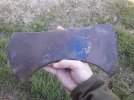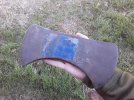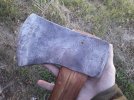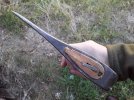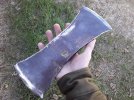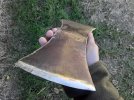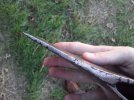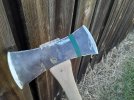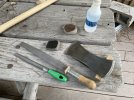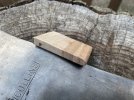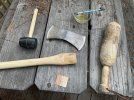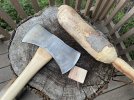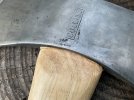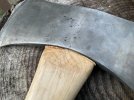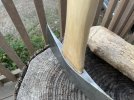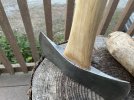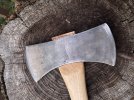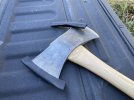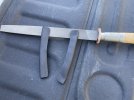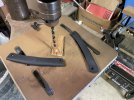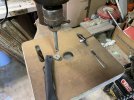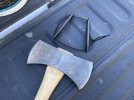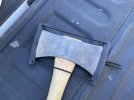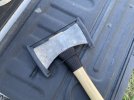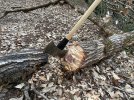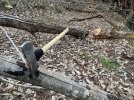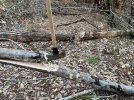scdub
Basic Member
- Joined
- May 29, 2004
- Messages
- 2,964
Hey Folks,
A couple of days ago I found an old Collins brand double bit head.
I’ve never owned a double bit so I’m excited to try it out.
I already got the old handle plug and the two metal wedges removed and have removed most of the rust with naval jelly and some fine steel wool. It’s just over 3 pounds with asymmetric bits, and based on some quick research it looks like this head is from the 60’s or earlier and therefore of good quality but nothing special. I plan to use it.
Here’s how it looked 5 minutes ago:
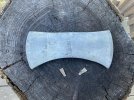
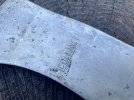
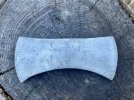
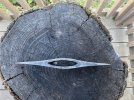
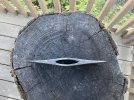
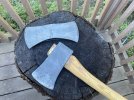
This is beside my only other full-sized axe for reference - an old Craftsman that I ALSO happened to find as just an axe head.
I’ve got a few questions that I’d like to pose here - I’m looking for both correct answers and pure opinions/speculation.
1) What’s a good source for a handle? I’ve checked a couple of local hardware stores but the 4 double-bit handles they had between them were all pretty bad re: grain orientation/runout. I’m hoping to avoid starting from scratch but not completely opposed to that either.
1.5) If I end up with a choice - how long a handle would you suggest?
2) How much should I worry about/address rust on the inside of the eye? I scrubbed much of it out with the naval jelly but haven’t started using sandpaper or anything…
3) Besides sharpening, I was planning to clean up the spine and bottom portion where the eye was scuffed when the handle was cut off with a saw sometime in the past. Is there anything else I should do before mounting the head?
4) The first pic shows the wedges that I removed. Should I just reuse them or get different/stainless ones? Should I use both of them initially or reserve one for future head tightening?
That’s what’s on my mind but there are likely other things I’m not thinking about so feel free to offer other advice that you might have.
Thanks!
A couple of days ago I found an old Collins brand double bit head.
I’ve never owned a double bit so I’m excited to try it out.
I already got the old handle plug and the two metal wedges removed and have removed most of the rust with naval jelly and some fine steel wool. It’s just over 3 pounds with asymmetric bits, and based on some quick research it looks like this head is from the 60’s or earlier and therefore of good quality but nothing special. I plan to use it.
Here’s how it looked 5 minutes ago:






This is beside my only other full-sized axe for reference - an old Craftsman that I ALSO happened to find as just an axe head.
I’ve got a few questions that I’d like to pose here - I’m looking for both correct answers and pure opinions/speculation.
1) What’s a good source for a handle? I’ve checked a couple of local hardware stores but the 4 double-bit handles they had between them were all pretty bad re: grain orientation/runout. I’m hoping to avoid starting from scratch but not completely opposed to that either.
1.5) If I end up with a choice - how long a handle would you suggest?
2) How much should I worry about/address rust on the inside of the eye? I scrubbed much of it out with the naval jelly but haven’t started using sandpaper or anything…
3) Besides sharpening, I was planning to clean up the spine and bottom portion where the eye was scuffed when the handle was cut off with a saw sometime in the past. Is there anything else I should do before mounting the head?
4) The first pic shows the wedges that I removed. Should I just reuse them or get different/stainless ones? Should I use both of them initially or reserve one for future head tightening?
That’s what’s on my mind but there are likely other things I’m not thinking about so feel free to offer other advice that you might have.
Thanks!
Last edited:

